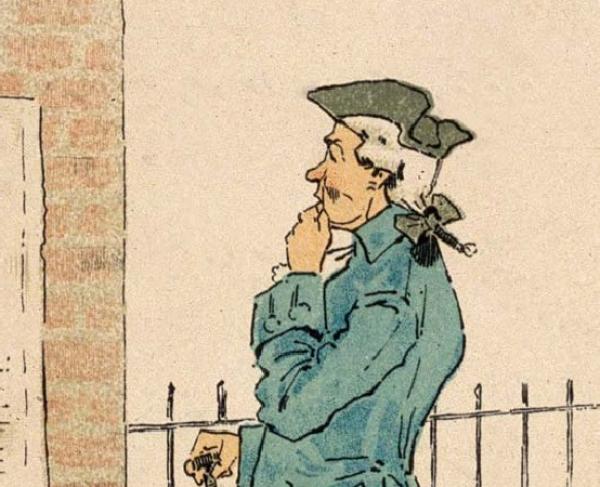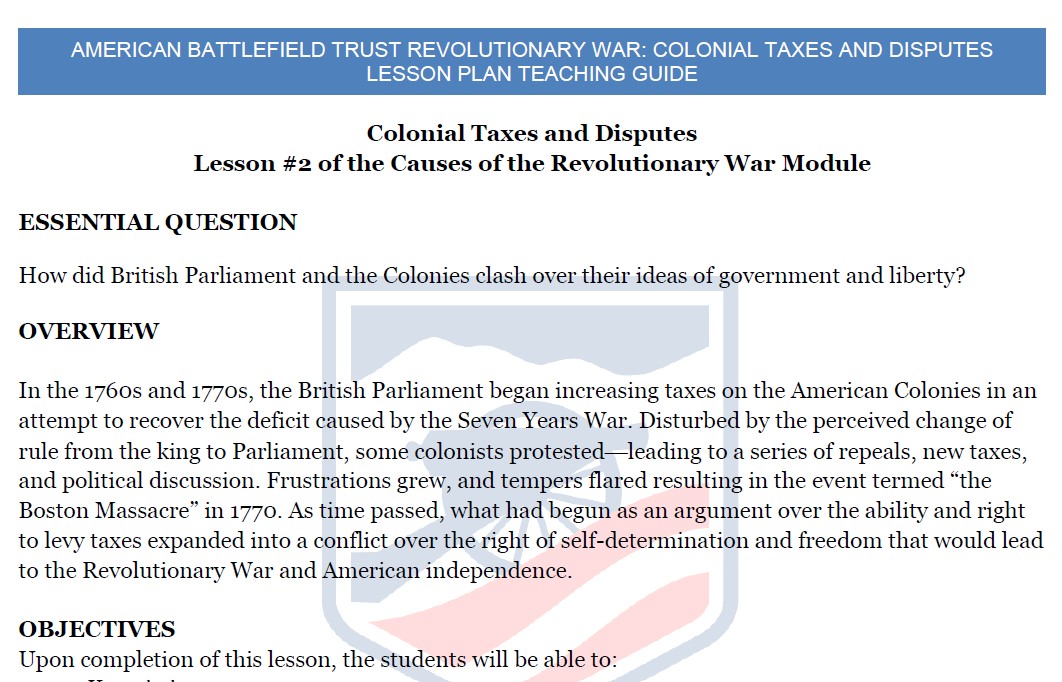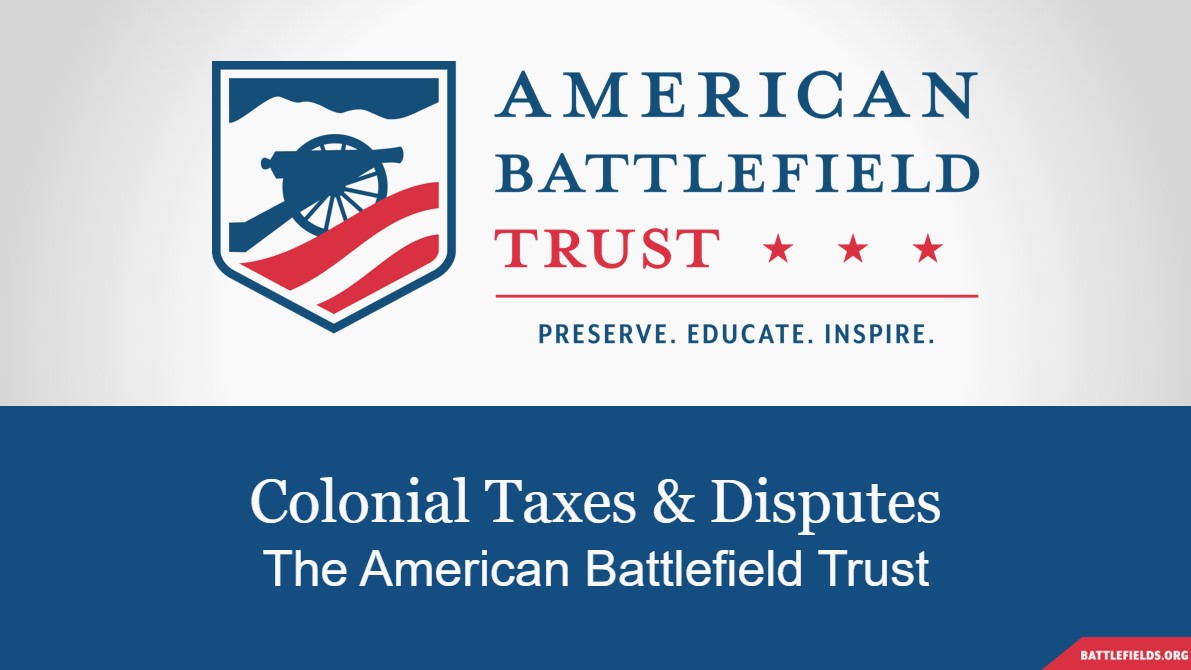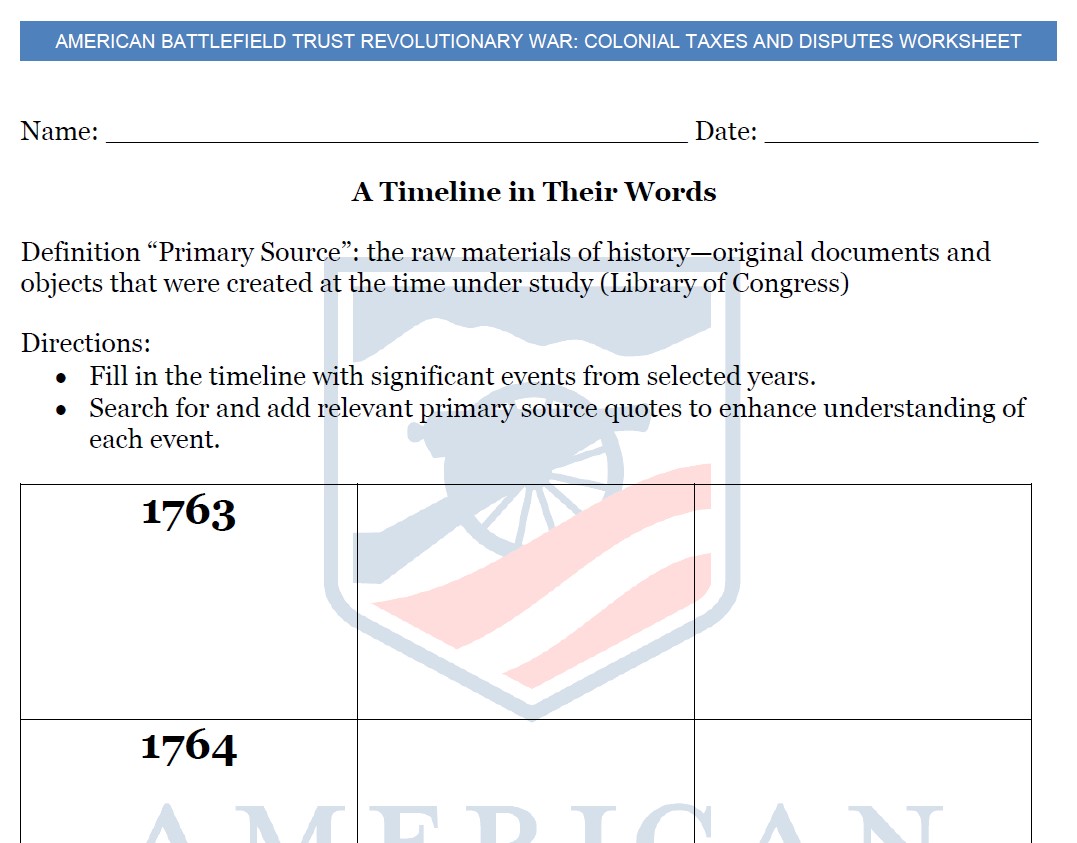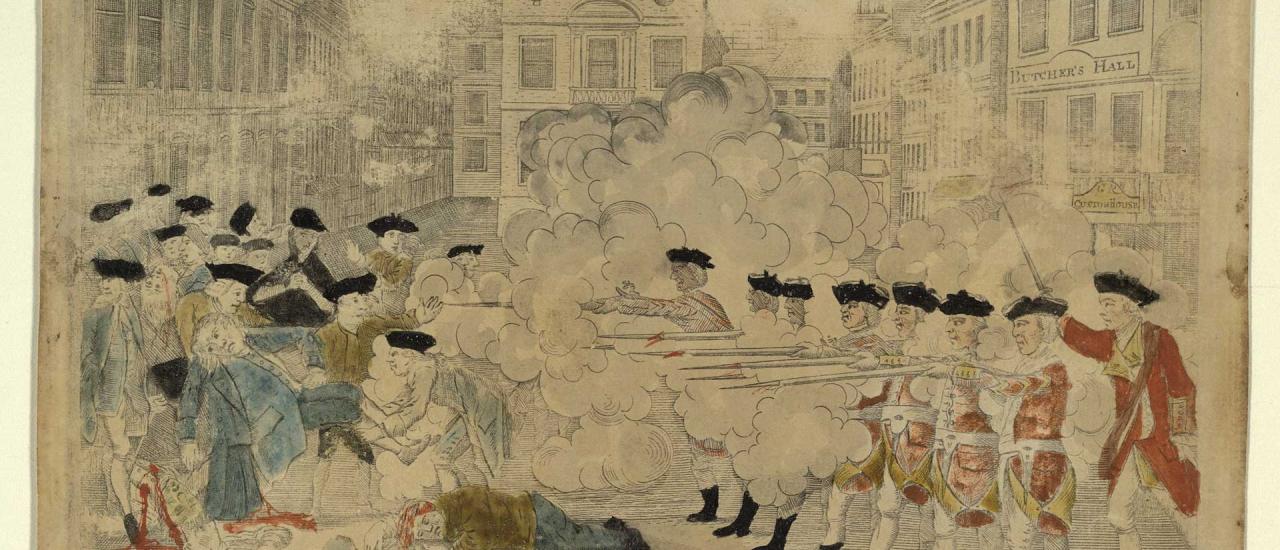
On March 5, 1770, British soldiers shot into a crowd of rowdy colonists in front of the Custom House on King Street, killing five and wounding six.
Colonial Taxes & Disputes Lesson Plan
A lesson plan for use in middle and high school classrooms.
In the 1760s and 1770s, the British Parliament began increasing taxes on the American Colonies in an attempt to recover the deficit caused by the Seven Years War. Disturbed by the perceived change of rule from the king to Parliament, some colonists protested—leading to a series of repeals, new taxes, and political discussion. Frustrations grew, and tempers flared resulting in the event termed “the Boston Massacre” in 1770. As time passed, what had begun as an argument over the ability and right to levy taxes expanded into a conflict over the right of self-determination and freedom that would lead to the Revolutionary War and American independence.
This Lesson Plan can be used as a prepared resource by following this curriculum plan which aligns to NCSS and Common Core Standards.
This Lesson Plan's assets can also be used on their own as supplemental resources. The display format is prepared for easy access, exploring, and learning.
Causes of the Revolutionary War Module
Upon completion of this lesson, the students will be able to:
1. Knowledge
- Explain the types of taxation that Britain levied on the North American Colonies in the 1760s and 1770s.
- Discuss how the taxation, protests, and British and American responses fueled the path toward military conflict and eventual independence.
2. Comprehension/Application/Analysis
- Read through primary source documents and create a timeline of the clash of ideas and words which led toward the American Revolution.
3. Evaluation
- Evaluate how the taxes and conflicts in the colonies and Britian’s responses increased the tension and conflict, leading toward declaring independence.
Check out the Lesson Plan Teaching Guide for more instructions on using the prepared Lesson Plan.
Lesson Plan Primary and Secondary Source Activity:
- Use the Lesson’s PowerPoint to explore the context and history; the PowerPoint introduces Essential Questions and lays foundational knowledge about the conflict.
- Reference this timeline if needed to match historic events to the dates listed on the worksheet: Revolutionary War Timeline
- Distribute the primary source worksheet and have the students read the provided primary sources for this lesson. Students may work on their own or as a group.
- Students will read the primary sources and select quotes that match the timeline events.
- Students may present their reflections from the worksheet verbally or written
- 7 selected primary sources are available under the “Primary Source” section this lesson plan page.
OPTIONAL HOMEWORK/ASSESSMENT/ADDITIONAL ACTIVITIES:
Option 1: The Boston Massacre
Students can study the Boston Massacre with the following resources, a primary source, and guided questions:
- Boston Massacre (Video – 3 minutes)
- Who was Crispus Attucks? (Video – 2 minutes)
- Account of the Boston Massacre
- Boston Massacre Primary Source Questions
Option 2: Sons of Liberty/Daughters of Liberty
Students can research the Sons of Liberty or the Daughters of Liberty. Here are some sources which may be helpful starting points for research:
- Who were the Sons of Liberty?
- Association of the Sons of Liberty of New York
- The Daughters of Liberty
Then the students will write a letter as though they are telling a friend about the Sons/Daughters. Encourage them to write, either persuading the friend to join the group as a Patriot or expressing concern about the group’s activities as a Loyalist.
Common Core State Standards- ELA & History/Social Studies
Grades 6-8
- Key Ideas and Details:
- CCSS.ELA-LITERACY.RH.6-8.3
- Identify key steps in a text's description of a process related to history/social studies (e.g., how a bill becomes law, how interest rates are raised or lowered).
- CCSS.ELA-LITERACY.RH.6-8.3
- Craft and Structure:
- CCSS.ELA-LITERACY.RH.6-8.5
- Describe how a text presents information (e.g., sequentially, comparatively, causally).
- CCSS.ELA-LITERACY.RH.6-8.5
- Integration of Knowledge and Ideas:
- CCSS.ELA-LITERACY.RH.6-8.9
- Analyze the relationship between a primary and secondary source on the same topic.
- CCSS.ELA-LITERACY.RH.6-8.9
Grades 9-10
- Key Ideas and Details:
- CCSS.ELA-LITERACY.RH.9-10.3
- Analyze in detail a series of events described in a text; determine whether earlier events caused later ones or simply preceded them.
- CCSS.ELA-LITERACY.RH.9-10.3
- Craft and Structure:
- CCSS.ELA-LITERACY.RH.9-10.5
- Analyze how a text uses structure to emphasize key points or advance an explanation or analysis.
- CCSS.ELA-LITERACY.RH.9-10.5
Grades 11-12
- Key Ideas and Details:
- CCSS.ELA-LITERACY.RH.11-12.2
- Determine the central ideas or information of a primary or secondary source; provide an accurate summary that makes clear the relationships among the key details and ideas.
- CCSS.ELA-LITERACY.RH.11-12.3
- Evaluate various explanations for actions or events and determine which explanation best accords with textual evidence, acknowledging where the text leaves matters uncertain.
- CCSS.ELA-LITERACY.RH.11-12.2
- Craft and Structure:
- CCSS.ELA-LITERACY.RH.11-12.5
- Analyze in detail how a complex primary source is structured, including how key sentences, paragraphs, and larger portions of the text contribute to the whole.
- CCSS.ELA-LITERACY.RH.11-12.5
- Integration of Knowledge and Ideas:
- CCSS.ELA-LITERACY.RH.11-12.9
- Integrate information from diverse sources, both primary and secondary, into a coherent understanding of an idea or event, noting discrepancies among sources.
- CCSS.ELA-LITERACY.RH.11-12.9
Social Studies - National Council for the Social Studies
- Theme 2: Time, Continuity, and Change
- Theme 3: People, Places, and Environments
- Theme 5: Individuals, Groups, and Institutions
- Theme 6: Power, Authority, and Governance
- Theme 9: Global Connections
- Theme 10: Civic Ideals and Practices
This Lesson plan
contains the following:
3 Activities | 24 Resources
This Lesson plan is a part of:
Revolutionary War Curriculum | Causes of the Revolutionary War Module
